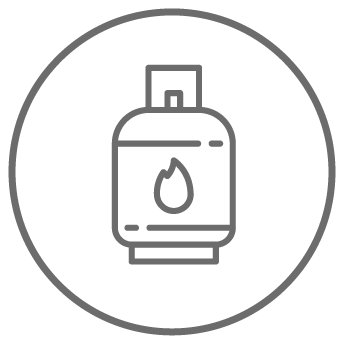Air conditioning gases - History, types and costs

Perhaps you have never thought about it, but hydrocarbons are the gases also used for car air conditioning, and today R1235yf is mostly used, which is a viable alternative to CO2 that is only intended for high-pressure systems. The previous gas, R134a, continues to be used only on cars produced in previous years, and for the end customer the environmental regulations translate into ever-increasing costs for recharging the air conditioner.
Air conditioning gases – History
The first refrigeration and air conditioning systems of the late 1800s used CO2, ammonia and ethyl/methyl ether as refrigerants. In the early 1900s, they switched to nitrous oxide or ethane/propane.
The mechanism involves the change of state of a fluid in order to extract heat from the environment, but these gases are soon replaced by a new generation of chlorinated refrigerants, which are chemically very stable, non-toxic and non-flammable and appeared in the early 1930s. These are the CFCs that contain chlorine and fluorine and to whose family Freon 11 and 12 and R22 and R502 belong.
CFCs have evolved over more than 50 years and have delivered important results in terms of industrial costs and thermodynamic efficiency.
Refrigerant gases and the ozone hole
In 1974, research by Nobel chemistry laureates Rowland and Molina highlighted the negative impact of refrigerant gases in the atmosphere and their persistence in the upper stratosphere for tens of years. Here, chlorine reacts with ozone and leads to the so-called greenhouse effect as well as the creation of the ozone hole.
As a remedy, the Montreal Protocol was signed in 1987, requiring a 50% reduction in the production and consumption of CFCs by 1999. Since 31 December 2000, the use of CFCs, even in the maintenance and refilling of existing refrigeration and air conditioning systems, has been prohibited.
From CFCs to HFCs - The new generation of air conditioning gases
Abolished CFCs, HFCs are starting to be used for air conditioning, including R134a, which is used in all cars produced before January 2017. However, this gas also contributes to greenhouse gases, having a GWP index of 1430 and an average lifetime in the atmosphere of 12 years. This is why European Directive 2006/40/EC bans its use in vehicles type-approved after 1 January 2011. A new European regulation was therefore introduced to limit the potential harmful effect of the gases, requiring the use of refrigerants with a GWP of no more than 150.
As per today, car manufacturers use R1234yf for air conditioning, and HFO fluid that comes from propane, has a GWP index of 4 and only lasts 11 days in the air.
Air conditioning gases - Costs
Air-conditioning a car with R1234yf gas is 10 times more expensive than with R134a, and this is not the only disadvantage of HFOs. They are flammable fluids if they are exposed to hot engine parts and emit highly toxic hydrofluoric acid. Therefore, the handling of the charging station requires specific procedures and the operator must use gloves and a mask and work in ventilated rooms. Furthermore, not all cars on the road are compatible with the new refrigerant fluid, which is corrosive to the compressor and some materials in the air conditioning system.
We conclude by saying that the cost of recharging car air conditioning in a city like Rome depends on the type of gas used:
- R 134a - Refill price: 100 Euro+VAT
- R1234yf - Refill price: 280 Euro+VAT
- Price of 12 kg cylinder (for the workshop) R134a: 400-500 Euro (5 Kg 230 Euro)
- Cylinder price 5 Kg (for the workshop) R1234yf: 800 Euro




